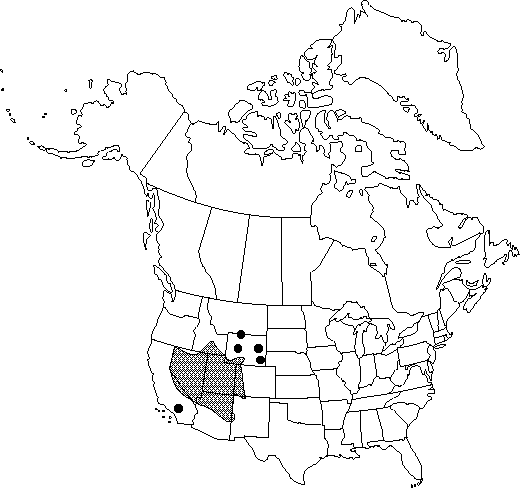Juniperus osteosperma
Leafl. W. Bot. 5: 125. 1948.
Shrubs or trees monoecious, to 6 (–12) m, multi or single-stemmed; crown rounded. Bark exfoliating in thin gray-brown strips, that of smaller and larger branchlets smooth. Branches spreading to ascending; branchlets erect, 3–4-sided in cross-section, about as wide as length of scalelike leaves. Leaves light yellow-green, abaxial glands inconspicuous and embedded, exudate absent, margins denticulate (at 20×); whip leaves 3–5 mm, glaucous adaxially; scalelike leaves 1–2 mm, not overlapping, or, if so, by less than 1/10 their length, keeled, apex rounded, acute or occasionally obtuse, appressed. Seed-cones maturing in 1–2 years, of 1–2 sizes, with straight peduncles, globose, (6–) 8–9 (–12) mm, bluish brown, often almost tan beneath glaucous coating, fibrous, with 1 (–2) seeds. Seeds 4–5 mm.
Habitat: Dry, rocky soil and slopes
Elevation: 1300–2600 m
Distribution

Ariz., Calif., Colo., Idaho, Mont., Nev., N.Mex., Utah, Wyo.
Discussion
Juniperus osteosperma is the dominant juniper of Utah. It is reported to hybridize with J. occidentalis in northwestern Nevada (F. C. Vasek 1966).
Selected References
None.